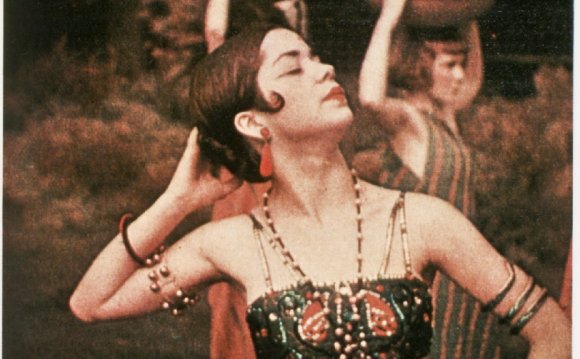
 You know how sometimes you are looking for one thing, but find something else that is even better? This color portrait of George Eastman, the founder of the Eastman Kodak Company, is an example. It was taken by photographer Joseph D’ Anunzio on September 2, 1914, more than 20 years before Kodachrome film was introduced to the public. How is that possible?
You know how sometimes you are looking for one thing, but find something else that is even better? This color portrait of George Eastman, the founder of the Eastman Kodak Company, is an example. It was taken by photographer Joseph D’ Anunzio on September 2, 1914, more than 20 years before Kodachrome film was introduced to the public. How is that possible?
George Eastman by Joseph D’ Anunzio, September 2, 1914.
The photograph came to the Photographic History Collection by an accident that worked to the museum’s advantage. In 1969, several hundred portraits were donated to the collection by a single donor. Among the portraits were four 8 X 10 inch glass plates, described as Kodachromes taken in 1914. Unfortunately, two of the portraits, both of young women, arrived damaged. One had a cracked corner; the other had a crack in the glass plate from top to bottom. The donor apologized for packing the glass plates poorly and sent the color portrait of George Eastman by way of compensation.
Unfortunately, two of the portraits, both of young women, arrived damaged. One had a cracked corner; the other had a crack in the glass plate from top to bottom. The donor apologized for packing the glass plates poorly and sent the color portrait of George Eastman by way of compensation.
“Kodachrome” might sound familiar. Kodak eventually had at least three different processes that went by this new trademark, the first in 1914. In the early years of the twentieth century Eastman Kodak pursued the development of a simple color photography process that could be used by amateur photographers. Charles Mees, the first director of Kodak Research Laboratories, said that George Eastman was crazy about color.
Charles Mees, the first director of Kodak Research Laboratories, said that George Eastman was crazy about color.
The 1914 version was devised by John Capstaff, a member of Kodak’s research staff. To make a color image like the museum’s photograph, two 8 X 10 inch glass plates were sandwiched together. Two photos were taken at the same time by a special camera through green and orange-red filters that reversed one image with a mirror. After the negatives were developed the positive images were dyed green and orange-red and bound together with the emulsion sides face to face.
 George Eastman enjoyed using the new Kodachrome process. He took color photographs of family, friends, business associates, and visitors. Capstaff process Kodachromes were exhibited at the Rochester, New York art gallery in November 1914 and at London’s Royal Photographic Society in March 1915. The same photographs were also shown at the San Francisco Panama Pacific Exposition later in 1915. It is believed by the donor that the George Eastman Kodachrome above was exhibited at the Rochester art gallery in November 1914 and possibly at the other exhibits.
George Eastman enjoyed using the new Kodachrome process. He took color photographs of family, friends, business associates, and visitors. Capstaff process Kodachromes were exhibited at the Rochester, New York art gallery in November 1914 and at London’s Royal Photographic Society in March 1915. The same photographs were also shown at the San Francisco Panama Pacific Exposition later in 1915. It is believed by the donor that the George Eastman Kodachrome above was exhibited at the Rochester art gallery in November 1914 and possibly at the other exhibits.
YOU MIGHT ALSO LIKE










